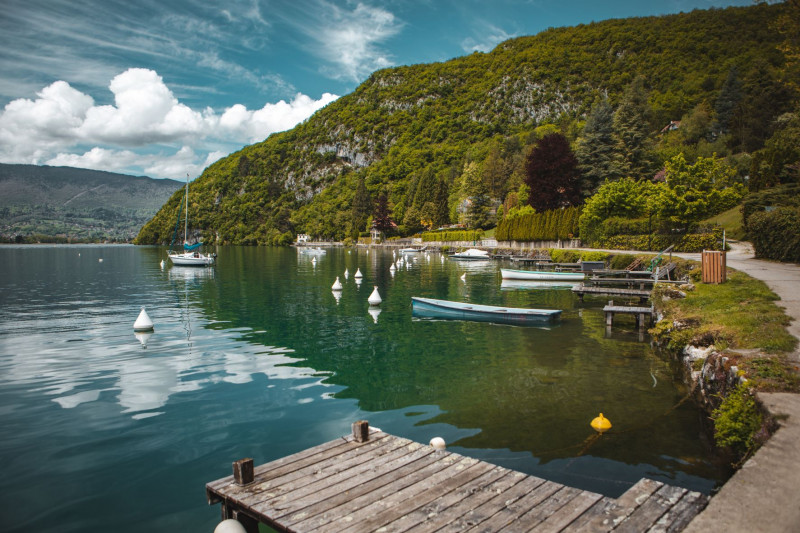Sources Lake Annecy, whose name comes from the numerous waterfalls and rivers that feed Lake Annecy, is an area located at the southern end of the lake. Rich in mountains, waterways and beaches, the territory of the Sources du lac d'Annecy is the very definition of the gentle way of life. Located 35 minutes from Saint Jean de Sixt, there is a wide range of possible activities:
- hiking at La Sambuy or on the slopes of the Charbon mountain
- walks in the Bout du Lac Reserve and around the geo-sites of the Massif des Bauges regional nature park
- canyoning in the Nant de Montmin
- wakesurfing, sailing and paddling on Lake Annecy
- climbing at Marlens and via ferrata at La Sambuy
- cycling on the Epine, Forclaz and Tamié passes, or along the Annecy-Albertville cycle path
- mountain biking on the 100 km of marked trails of the destination
- paragliding, hang gliding, microlighting, hot air ballooning over Lake Annecy and with a view of Mont Blanc
- golf in Giez
- fishing at the Marlens-Val de Chaise lake
- swimming and relaxing on the beach at Doussard
- discovering the natural heritage of the caves and waterfalls of Seythenex
- cultural visits to villages and hamlets of character
Find all the information on Sources of Lake Annecy on their website : Tourist Office Sources of Lake Annecy
This territory includes 7 municipalities : Faverges-Seythenex, Doussard, Saint-Ferréol, Lathuile, Giez, Chevaline and Val de Chaise.
- hiking at La Sambuy or on the slopes of the Charbon mountain
- walks in the Bout du Lac Reserve and around the geo-sites of the Massif des Bauges regional nature park
- canyoning in the Nant de Montmin
- wakesurfing, sailing and paddling on Lake Annecy
- climbing at Marlens and via ferrata at La Sambuy
- cycling on the Epine, Forclaz and Tamié passes, or along the Annecy-Albertville cycle path
- mountain biking on the 100 km of marked trails of the destination
- paragliding, hang gliding, microlighting, hot air ballooning over Lake Annecy and with a view of Mont Blanc
- golf in Giez
- fishing at the Marlens-Val de Chaise lake
- swimming and relaxing on the beach at Doussard
- discovering the natural heritage of the caves and waterfalls of Seythenex
- cultural visits to villages and hamlets of character
Find all the information on Sources of Lake Annecy on their website : Tourist Office Sources of Lake Annecy
This territory includes 7 municipalities : Faverges-Seythenex, Doussard, Saint-Ferréol, Lathuile, Giez, Chevaline and Val de Chaise.

